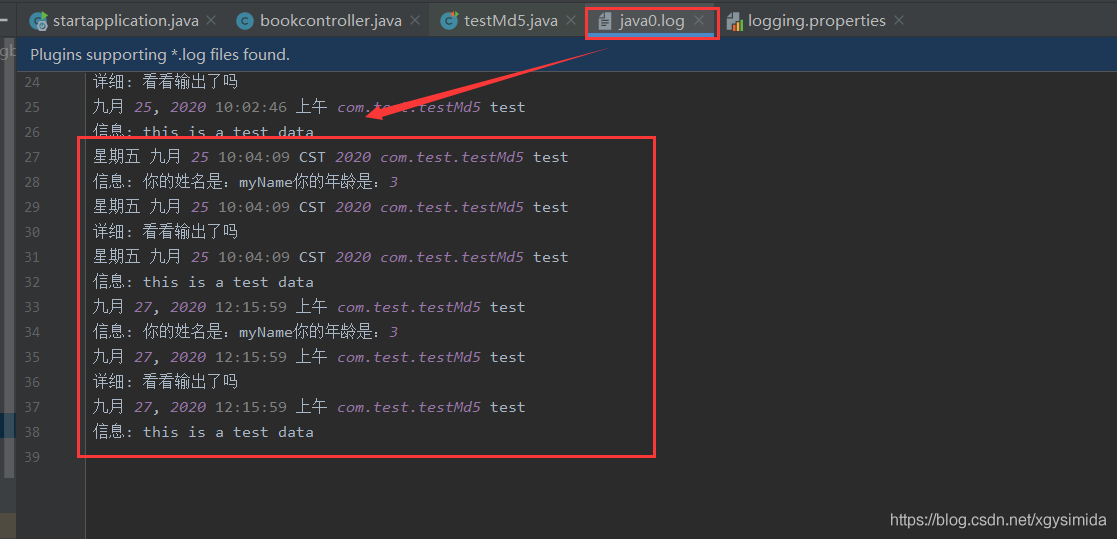文章詳情頁
Java Thread in JVM
瀏覽:2日期:2024-07-01 09:45:18
內容: 本文從JVM的角度探討Java Thread的語法和編譯結果。如果需要獲得第一手資料,請直接訪問以下的資源——Java語言規(guī)范,Java虛擬機規(guī)范中有關線程的定義說明。本文旨在介紹這些比較重要的線程相關的規(guī)范,基本上不另作發(fā)揮。(除了提到微軟的“公共語言基礎構造。:-)Java Language Specificationhttp://java.sun.com/docs/books/jls/second_edition/html/classes.doc.html#30531JVM Specificationhttp://java.sun.com/docs/books/vmspec/2nd-edition/html/Compiling.doc.html#6530http://java.sun.com/docs/books/vmspec/2nd-edition/html/Instructions2.doc9.htmlhttp://java.sun.com/docs/books/vmspec/2nd-edition/html/Threads.doc.htmlMicrosoft CLI -- Common Language Infrastructure (sorry, off the topic :-)http://msdn.microsoft.com/net/ecma/1.synchronized method 的java語言規(guī)范詳見http://java.sun.com/docs/books/jls/second_edition/html/classes.doc.html#30531。用synchronized關鍵字修飾的方法,分為兩種情況:(static)靜態(tài)方法,和實例方法。(static)靜態(tài)方法的“鎖是這個擁有這個方法的對象的Class對象;實例方法的“鎖是this,擁有這個方法的當前對象實例。怎么理解這段話,看一看下面的例子就明白了。下面兩段代碼的效果完全相同。代碼1 ==代碼2。代碼1:class Test {int count;synchronized void bump() { count++; }static int classCount;static synchronized void classBump() {classCount++;}}代碼2:class BumpTest {int count;void bump() {synchronized (this) {count++;}}static int classCount;static void classBump() {try {synchronized (Class.forName('BumpTest')) {classCount++;}} catch (ClassNotFoundException e) {...}}}2.synchronized關鍵字的編譯結果這一節(jié),我們來看一看synchronized關鍵字編譯之后的java虛擬機指令是什么。如果需要第一手資料,請參見java虛擬機規(guī)范相關的部分http://java.sun.com/docs/books/vmspec/2nd-edition/html/Compiling.doc.html#6530這段規(guī)范里面講到,java虛擬機規(guī)范提供兩條指令,monitorenter和monitorexit,來支持線程。但是對于上一節(jié)講到的,用synchronized修飾的方法來說,并不使用這兩個方法,而只是簡單地用ACC_SYNCHRONIZED標志修飾。虛擬機調用方法的時候會檢查這個標志,進行同步。synchronized語句的編譯結果對應monitorenter和monitorexit兩條指令。比如,下面的代碼:void onlyMe(Foo f) {synchronized(f) {doSomething();}}的編譯結果是Method void onlyMe(Foo)0 aload_1 // Push f 1 astore_2 // Store it in local variable 22 aload_2 // Push local variable 2 (f)3 monitorenter // Enter the monitor associated with f4 aload_0 // Holding the monitor, pass this and...5 invokevirtual #5 // ...call Example.doSomething()V8 aload_2 // Push local variable 2 (f)9 monitorexit // Exit the monitor associated with f10 return // Return normally11 aload_2 // In case of any throw, end up here12 monitorexit // Be sure to exit monitor...13 athrow // ...then rethrow the value to the invoker3.monitorenter和monitorexit詳見http://java.sun.com/docs/books/vmspec/2nd-edition/html/Instructions2.doc9.htmlmonitorenter定義的一段節(jié)錄:Operation : Enter monitor for objectOperand Stack : ..., objectref ... Description :The objectref must be of type reference.Each object has a monitor associated with it. The thread that executes monitorenter gains ownership of the monitor associated with objectref. If another thread already owns the monitor associated with objectref, the current thread waits until the object is unlocked, then tries again to gain ownership. If the current thread already owns the monitor associated with objectref, it increments a counter in the monitor indicating the number of times this thread has entered the monitor. If the monitor associated with objectref is not owned by any thread, the current thread becomes the owner of the monitor, setting the entry count of this monitor to 1.這段話的意思是說,monitorenter操作的目標一定要是一個對象,類型是reference。Reference實際就是堆里的一個存放對象的地址。每個對象(reference)都有一個monitor對應,如果有其它的線程獲取了這個對象的monitor,當前的線程就要一直等待,直到獲得monitor的線程放棄monitor,當前的線程才有機會獲得monitor。如果monitor沒有被任何線程獲取,那么當前線程獲取這個monitor,把monitor的entry count設置為1。表示這個monitor被1個線程占用了。當前線程獲取了monitor之后,會增加這個monitor的時間計數,來記錄當前線程占用了monitor多長時間。我們看到,monitor這個詞在java虛擬機規(guī)范規(guī)定出現,但是在java語言和API文檔里面并沒有出現。monitor是藏在線程同步后面的原理和概念。4.Threads and Locks詳見http://java.sun.com/docs/books/vmspec/2nd-edition/html/Threads.doc.html。這段規(guī)范詳細地介紹了thread和lock的原理。下面給出這段規(guī)范的highlight。8.4 Nonatomic Treatment of double and long Variables (double和long類型的非原子操作。)8.7 Rules for volatile Variables8.10 Example: Possible Swap8.11 Example: Out-of-Order Writes如果對列出的這些highlight感興趣,請訪問相應的java虛擬機規(guī)范網址。5.Why specification?本文主要討論java相關規(guī)范的內容。規(guī)范文檔非常重要,尤其對于java,C#這種生成中間代碼的語言來說。上面說的是java的相關規(guī)范。這里順便提一下微軟.Net的相關規(guī)范。微軟的“公共語言基礎構造規(guī)范:Microsoft CLI -- Common Language Infrastructure (sorry, off the topic :-)http://msdn.microsoft.com/net/ecma/這個網址上有C#語言規(guī)范,CLI規(guī)范的下載。Enjoy it. :-)出處 wang hailong Java, java, J2SE, j2se, J2EE, j2ee, J2ME, j2me, ejb, ejb3, JBOSS, jboss, spring, hibernate, jdo, struts, webwork, ajax, AJAX, mysql, MySQL, Oracle, Weblogic, Websphere, scjp, scjd
標簽:
Java
相關文章:
排行榜

 網公網安備
網公網安備